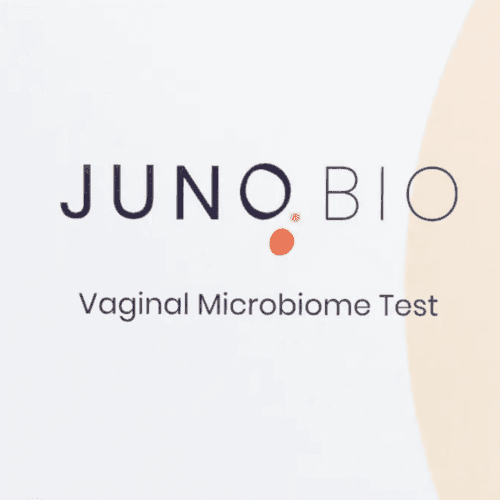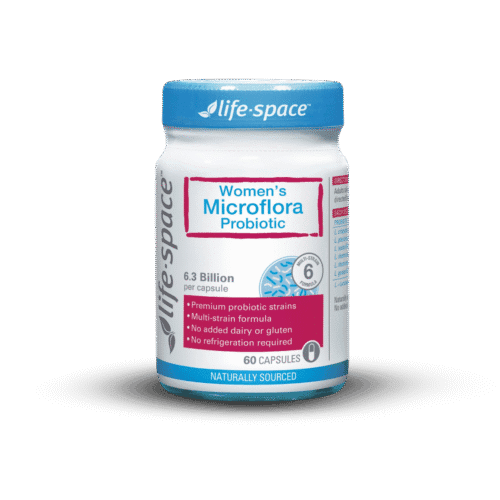High-PAC cranberry has become a rising star in the vaginal wellness world. Influencers are drinking it, brands are bottling it, and many people are using cranberry as part of their bacterial vaginosis (BV) routine.
Some female-focused cranberry supplement companies go to great lengths to avoid saying their products ‘treat’ BV, but their imagery, wording, and testimonials make the intention very clear.
So, can cranberry treat BV? The answer is yes, but only for a specific group of people and only in a very particular way. Cranberry does not treat BV directly. Cranberry does not restore lactobacilli, change vaginal pH, break biofilms, or stop Gardnerella and co from causing trouble. But cranberry can help break the cycle that leads many into repeated BV episodes.
Here is an evidence-backed explanation of why cranberry is useful for some vaginas but is absolutely not a BV cure.
What cranberry actually does
Cranberries contain a group of polyphenols called A-type proanthocyanidins, or PACs. These PACs have a particular, very well-studied role: they stop uropathogenic Escherichia coli from adhering to the cells lining the urinary tract. The PACs attach to the fimbriae (tiny hook-like structures) used by E. coli to latch onto the bladder wall, making the bacteria easier to flush out.
This is why high-PAC cranberry is repeatedly shown to reduce recurrent UTIs when taken consistently, especially in people who get multiple infections a year.
The key word here is urinary. Cranberry’s anti-adhesion effect works in the bladder because PACs and their metabolites reach the urinary tract in meaningful concentrations. The vagina does not get the same direct exposure.
So while cranberry supports the urinary tract, BV is an entirely different scenario requiring different tools.
Why cranberry does not directly treat BV
There’s a lot of confusion online about cranberry’s role in vaginal health, particularly around BV. Here’s what the evidence actually shows.
Different organisms
BV is driven by anaerobic bacteria such as Gardnerella, Atopobium, Prevotella, and Mobiluncus. These organisms form a cohesive biofilm on the vaginal walls that suppresses lactobacilli and disrupts vaginal pH.
Cranberry PACs target E. coli. Gardnerella uses completely different adhesion molecules and biofilm structures. The anti-adhesion mechanism does not meaningfully transfer.
No clinical trials
There are no well-designed human trials showing that cranberry treats BV, reduces BV recurrence, restores vaginal flora, or alters the BV biofilm. A few studies explore cranberry extracts in vitro against vaginal bacteria, but the concentrations used are vastly higher than what oral cranberry would ever deliver to vaginal tissue.
Not a lactobacillus-restoring agent
BV needs lactobacilli to stabilise the ecosystem, particularly Lactobacillus crispatus. Cranberry does not meaningfully influence vaginal lactobacilli populations.
Not an acidifier
BV creates a less acidic/alkaline environment. Cranberry does not lower vaginal pH.
Not a biofilm disruptor in the vagina
BV’s biofilm is stubborn and multi-organism. Cranberry has mild biofilm effects on bladder organisms, but not on vaginal ones. It does not replace treatments specifically designed to disrupt BV biofilms.
So if cranberry does none of these things, why do so many people with BV say cranberry helps?
To understand this, we need to talk about the antibiotic–UTI–BV loop.
The antibiotic–UTI–BV loop
A large number of BV sufferers also experience recurrent urinary tract infections (UTIs). And UTIs often lead to antibiotic treatment. Repeated antibiotic courses can damage the vaginal microbiome by wiping out lactobacilli, which can lead to BV flare-ups.
This creates a vicious loop:
sex → UTI → antibiotics → BV → irritation → another UTI → more antibiotics → worse BV → yeast → inflammation → misery
Cranberry can interrupt this loop — not by treating BV, but by reducing the UTI triggers that destabilise the vaginal ecosystem.
This is why some people feel their BV improves with cranberry. Cranberry is not treat BV; cranberry prevents the UTI that leads to the antibiotic that triggers BV.
Let’s explore this more.
How high-PAC cranberry can indirectly help BV
Cranberry may help some people with BV, but only as an indirect effect of reducing UTI frequency.
1. Fewer UTIs means fewer antibiotics
Every time you take antibiotics for a UTI, your vaginal lactobacilli take a hit. Lactobacilli are the backbone of vaginal health, keeping pH low, pathogens suppressed, and Gardnerella and friends under control.
By reducing recurrent UTIs, cranberry reduces the number of antibiotic courses you need.
Fewer antibiotics = improved vaginal stability.
2. Fewer inflammatory flare-ups
UTIs don’t just disturb the bladder. They also inflame the vagina and peri-urethral tissues. Inflammation disrupts vaginal pH, mucus quality, and epithelial integrity, thereby increasing the likelihood of BV.
Cranberry reduces UTI-related inflammation by preventing infection in the first place.
3. Fewer post-antibiotic BV episodes
A very common pattern is:
• UTI → antibiotics → BV or mixed BV/yeast → irritation → another UTI → another antibiotic
Cranberry can help break this cycle by preventing the first domino from falling.
4. Peri-urethral microbial flow stabilises
Those prone to UTIs often have mixed vaginal–urethral microbial traffic. When urethral inflammation settles, the whole area becomes less reactive.
Cranberry doesn’t change the vaginal microbiome directly, but it can stabilise the broader pelvic microbial environment.
5. Lowering the frequency of cross-contamination events
For some women, the pathway is:
sex → mild microtrauma → bacterial movement → bladder irritation → UTI
Cranberry may reduce the chance that this escalates into a full UTI, again reducing the need for antibiotics.
6. Systemic anti-inflammatory support
PACs and their metabolites exhibit systemic anti-inflammatory and antioxidant actions, which may contribute to overall mucosal resilience.
This is not specifically vaginal, but it may help the environment recover between infections.
Who cranberry might help with BV
Cranberry is unlikely to benefit people whose BV is unrelated to UTIs. However, it may genuinely help if you:
• get UTIs after sex
• get BV after every antibiotic
• get alternating BV and UTIs
• have chronic bladder irritation that worsens BV patterns
• have a history of repeated antibiotic exposure
• have BV that flares whenever you get cystitis
• get mixed symptoms (e.g. BV and urethral burning and urinary urgency)
In these cases, cranberry is breaking the cycle, not treating the BV directly.
Who cranberry will not help
Cranberry is unlikely to help:
• if you have recurrent BV without UTIs
• if your BV is hormonal (low oestrogen, postpartum, perimenopause)
• if your BV is driven by sexual exposure patterns
• if BV appears after a new partner
• if your BV is biofilm-dominant and chronic
• if your BV is related to low vaginal glycogen or mucosal thinning
• if your BV is mostly gut-vagina re-seeding
In these cases, cranberry is not addressing the root cause.
Why some brands position cranberry as a BV product
This isn’t a scientific section — it’s an honest one.
Some brands are deliberately positioning high-PAC cranberry as a vaginal health product because:
• it is safe
• it is legal to sell without therapeutic claims
• it fits the aesthetic of wellness
• consumers already associate cranberry with genital health
• they can use vague language like intimate balance, freshness, or comfort
• they avoid the regulatory restrictions of making BV claims
• BV sufferers are desperate for something that works
• the antibiotic–UTI–BV loop has created a massive recurring customer base
Cranberry is essentially a Trojan horse into the vaginal wellness market. It has a truth to it — it helps with UTI recurrence — but it is not a BV therapy.
How to use cranberry effectively if you get both BV and UTIs
1. High PAC content matters
You need 36–72 mg of A-type PACs daily. Anything lower is unlikely to affect UTI frequency.
2. It must be taken consistently
Cranberry works by preventing bacteria from attaching to the bladder wall. It doesn’t kill bacteria. You need a daily intake for weeks to months.
3. It is not a standalone BV plan
Even if cranberry reduces UTI-triggered BV flare-ups, you still need to:
• restore lactobacilli
• treat biofilms if relevant
• adjust vaginal pH
• support oestrogen if needed
• improve mucosal moisture and barrier function
4. It is best for the person with intertwined BV and UTI issues
If your BV is UTI-adjacent, cranberry is worth trying as part of a broader strategy.
Cranberry is not a BV treatment
Cranberry with high PAC is not a treatment for bacterial vaginosis.
It does not fix BV directly.
It does not kill Gardnerella.
It does not break BV biofilms.
It does not restore lactobacilli.
It does not normalise vaginal pH.
However, cranberry can help those who are trapped in the antibiotic–UTI–BV cycle by reducing UTIs and therefore reducing antibiotic use. This is where cranberry shines.
For this specific group, cranberry can meaningfully reduce BV recurrence — not by treating BV, but by eliminating one of the biggest triggers.
This distinction matters, especially in an environment where marketing often blurs these lines.
FAQs about cranberry and BV
No. Cranberry does not directly treat BV, does not restore lactobacilli, and does not change vaginal pH or break biofilms. It works in the urinary tract, not the vagina.
Only indirectly. Cranberry can help prevent recurrent UTIs, which means fewer antibiotics, less inflammation, and fewer BV flare-ups that occur after UTIs.
Usually because cranberry prevented the UTI that would have triggered their next BV flare. The improvement is real, but the mechanism is indirect.
Most research supports 36–72 mg of A-type PACs daily, measured using the BL-DMAC method.
Probably not. If your BV does not involve UTIs or antibiotic-triggered relapse, cranberry is unlikely to help.
Cranberry juice has low and inconsistent PAC levels. You would need impractically large volumes to reach therapeutic anti-adhesion concentrations. Standardised PAC supplements are more reliable.
Generally, yes. Cranberry is considered safe for long-term use. People with kidney stones or on warfarin should use caution.
No. BV requires targeted treatment such as lactobacillus restoration, antimicrobials, oestrogen support, or biofilm-targeted therapies depending on the case.
References
- Xiong Z, Gao Y, Yuan C, Jian D, Wei X. Preventive effect of cranberries with high dose of proanthocyanidins on urinary tract infections: a meta-analysis. Front Nutr. 2024;11:1422121. doi:10.3389/fnut.2024.1422121
- Williams G, Hahn D, Stephens JH, Craig JC, Hodson EM. Cranberries for preventing urinary tract infections. Cochrane Database Syst Rev. 2023;4:CD001321. doi:10.1002/14651858.CD001321.pub6
- Babar A, Moore L, Leblanc V, et al. High-dose versus low-dose standardised cranberry proanthocyanidin extract for the prevention of recurrent urinary tract infection in healthy women: a double-blind randomised controlled trial. BMC Urol. 2021;21:44. doi:10.1186/s12894-021-00811-w
- Cho A, Eidelberg A, Butler DJ, et al. Efficacy of daily intake of dried cranberry 500 mg in women with overactive bladder: a randomised, double-blind, placebo-controlled study. J Urol. 2021;205(2):507–513. doi:10.1097/JU.0000000000001384
- Bolgarina Z, Merriam A, Gonzalez-Gonzalez LF, et al. Cranberry supplements for urinary tract infection prophylaxis in pregnant women: a systematic review. Cureus. 2023;15(10):e46738. doi:10.7759/cureus.46738
- Rondanelli M, Mansueto F, Gasparri C, et al. Supplementation with highly standardised cranberry extract phytosome reduced urinary tract infection episodes in diabetic postmenopausal women taking SGLT-2 inhibitors: a randomised controlled trial. Nutrients. 2024;16(13):2113. doi:10.3390/nu16132113
- Caljouw MAA, van den Hout WB, Putter H, et al. Effectiveness of cranberry capsules to prevent urinary tract infections in vulnerable older persons: a double-blind randomised placebo-controlled trial in long-term care facilities. J Am Geriatr Soc. 2014;62(1):103–110. doi:10.1111/jgs.12593







